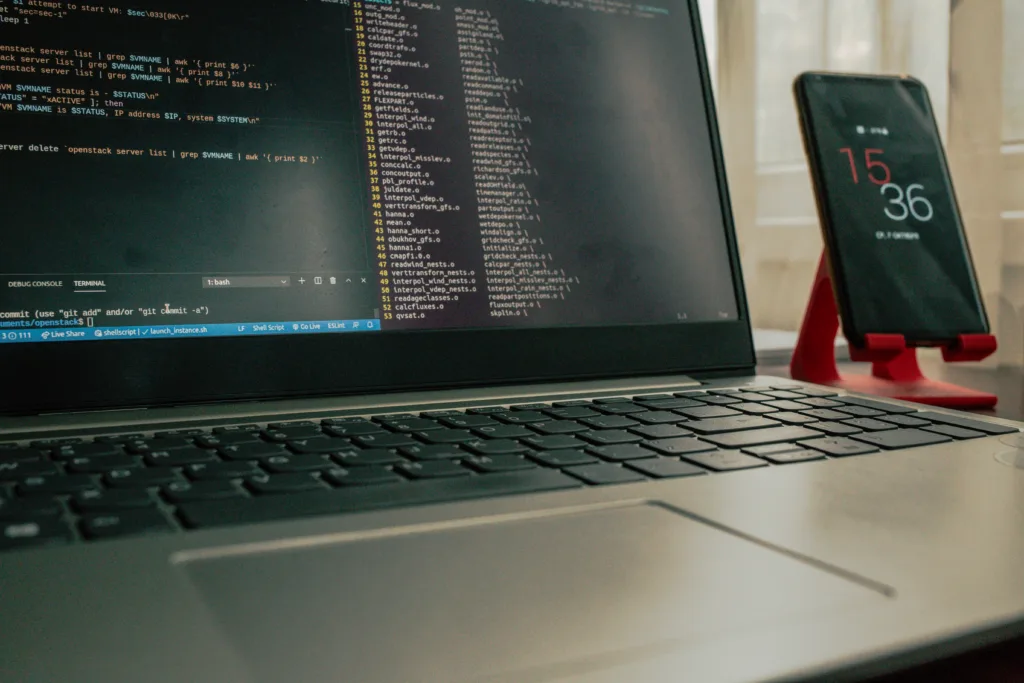No space left on device is a common error that many computer users encounter. It is an indication that your device has run out of storage space and cannot perform certain operations. This error can occur on any device, including Macs, PCs, and Linux machines. In this article, we will discuss the causes of this error and how to fix it.
One of the main causes of the “No space left on device” error is a process still using a deleted file. When a file is deleted, it is not immediately removed from the device’s memory. It remains there until the process using it is terminated. Therefore, if a process is still using a deleted file, it can prevent your device from freeing up storage space.
The quickest way to fix this error is to restart the process. This will force the process to release its hold on the deleted file and free up the reserved storage space. To do this, you can simply close the application and reopen it. Alternatively, you can use the Task Manager or Activity Monitor to identify the process and terminate it manually.
Another cause of the “No space left on device” error is a lack of free space on your device. If your device is running low on storage space, it can prevent you from performing certain operations and cause errors. To fix this, you need to free up some space on your device. The quickest way to do this is to clear cache files. These files can accumulate over time and take up a lot of space. You can also delete unnecessary files and uninstall unused applications to free up even more space.
If you are using a Linux machine, you can use the command line to free up disk space. Start by running the command “cd /” to get to the root of your machine. Then, run “sudo du -h –max-depth=1” to get a list of directories using a lot of disk space. You can then navigate to one of the big directories using the “cd” command and use “ls -l” to see which files are using a lot of space. Delete any unnecessary files to free up some space.
The “No space left on device” error can be frustrating and prevent you from performing important operations on your device. However, by understanding the causes of this error and fllowing the steps outlined in this article, you can quickly and easily free up storage space and fix this error.
How Do I Fix No Space Left On My Device?
To fix the “No space left on device” error, you can try the fllowing solutions:
1. Restart Processes Using Deleted Files: The most common reason for this error is a process still using a deleted file. You can free up the reserved storage by restarting the process.
2. Delete Unnecessary Files: You can also free up space on your device by deleting files that are no longer needed. This includes old photos, videos, music, and documents.
3. Clear Cache and App Data: Clearing the cache and app data can also free up space on your device. To do this, go to Settings > Storage > Cached data and tap on Clear cached data. You can also clear app data by going to Settings > Apps > select the app > Storage > Clear data.
4. Move Files to External Storage: If your device has a microSD card slot, you can move files to external storage to free up space on your device.
5. Use Cloud Storage: Another option is to use cloud storage services such as Google Drive, Dropbox, or Microsoft OneDrive to store your files.
6. Perform a Factory Reset: If none of the above solutions work, you can perform a factory reset on your device. This will wipe all data from your device and restore it to its original state. Make sure to back up all your important data before performing a factory reset.

What Does No Space Left On Device Mean On Mac?
The message “no space left on device” on a Mac means that the storage capacity of the device has been fully utilized and there is no more available space to store additional data. This can occur due to varios reasons such as a large number of files, applications, or media content stored on the device. When the storage capacity reaches its limit, the device may start experiencing performance issues such as slow response times, freezing, or crashing. It is important to free up space on the device by removing unnecessary files, deleting unused applications, or transferring data to an external storage device to prevent such issues. You can check the storage capacity of your Mac by going to the Apple menu > Storage > About This Mac.
Why Does Safari Say No Space Left On Device?
Safari may display the error message “no space left on device” when thre is not enough available storage on the device to load or save data. This can happen when the device’s storage is near full capacity or when there are large files or applications taking up a significant amount of space. Additionally, temporary files, caches, and browsing history accumulated over time can also contribute to the lack of available storage. To fix this issue, one can try deleting unnecessary data, uninstalling unused applications, and clearing browser caches and cookies. It may also be helpful to transfer data to an external storage device or to iCloud to free up space on the device.
How To Clear Space On Linux?
To clear space on your Linux machine, you can follow these steps:
1. Access the root of your machine by opening the terminal and running `cd /`.
2. Use the command `sudo du -h –max-depth=1` to display the size of directories in the current directory. This will help you identify which directories are using the most disk space and need to be addressed.
3. Once you have identified a directory that is taking up a lot of space, use the command `cd` followed by the directory name to access it.
4. Use the command `ls -l` to view the files in the directory and determine which ones are using the most space.
5. If you find files that you no longer need, you can delete them using the `rm` command followed by the file name. However, be careful not to delete any important system files.
6. Repeat steps 2 to 5 for any oter directories that are using a lot of space to free up additional disk space.
By using these commands, you can easily identify and delete unnecessary files and directories that are taking up valuable disk space on your Linux machine.

Conclusion
The “No space left on device” error can be a frustrating problem for both Mac and Linux users. However, it is easily fixable by identifying the root cause of the issue. If the error is caused by a process still using a deleted file, restarting the process should free up reserved storage. Clearing cache files and closing unnecessary tabs and windows can also free up space quickly. For Linux users, identifying which directories and files are using a lot of disk space and deleting any unnecessary ones can also help. By following thse simple steps, users can easily resolve the “No space left on device” error and continue using their devices without any further issues.
